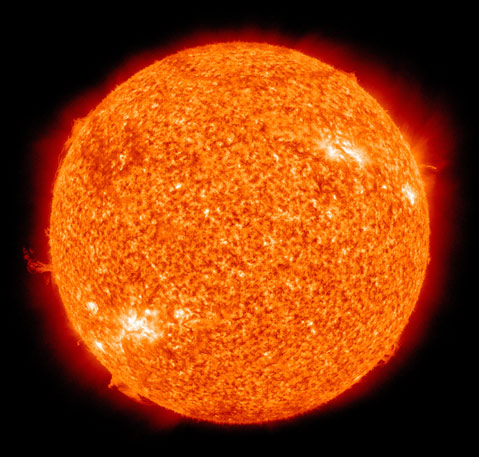Finding Energy from the Sun
UCSB Researches Creating Cheaper, More Lightweight Solar Cells

Researchers have recently discovered a new material that has promising solar-cell properties. It falls into a class of inorganic compounds called perovskites, and its discovery has prompted an explosion of solar-cell research at institutions all over the world, including UCSB.
Many factors go into making a good solar cell. Ideally, it should be inexpensive, made of safe and environmentally friendly materials, high performing, durable, and easy to install. Producing a commercially viable solar cell is a balancing act between all of these different, factors and perovskite solar cells show potential for achieving this equilibrium.
The perovskite that has shown the most promising results is made of common, inexpensive materials. Two of these chemicals—methylamine and hydriodic acid—may be familiar to Breaking Bad fans as they are found in the makeup of meth. While these chemicals are regulated by the Drug Enforcement Agency, they are not expensive and, when combined with lead chloride, produce a perovskite material for solar cells rather than an illegal drug. (If only Walter White and Jesse Pinkman had made solar cells instead of drugs.)
To create solar cells, the perovskite starting materials are dissolved in common solvents (non-water-based liquids) to form an ink that can be printed as a film onto a roll of solar panels. To produce the ink, methylamine and hydriodic acid are first mixed to form a salt. This salt is combined with lead chloride powder and one of several solvent options to form the ink. Changing the amount of material used and the solvent causes the solar cell properties, such as the thickness of the printed film, to change. Solar cell films must be sufficiently thick to absorb the maximum amount of solar energy and achieve high performance. Printed perovskite layers are very thin (less than one millimeter), making them lightweight and flexible and therefore easily installed on rooftops or even tents without adding any extra structural support.
Solar cells also have to perform effectively, which is measured by their efficiency in converting light into electricity. Recently reported efficiencies (~17 percent) for this new material match those of commercially available silicon solar cells (14-19 percent).
More work is necessary before perovskite solar cells reach the mainstream market. For example, while they are anticipated to be durable, they currently decrease in performance in humid environments. One solution is to encapsulate the material to keep out any moisture; another approach involves altering the perovskite structure to provide increased resistance to water.
In the two years since these particular perovskites were determined to have desirable solar-cell properties, solar-cell efficiencies have risen from 4 to 17 percent. There have been numerous academic research papers published and multiple patents filed as the field pushes forward. If research continues at this pace, it may not take long before perovskite solar cells reach the mainstream market.



